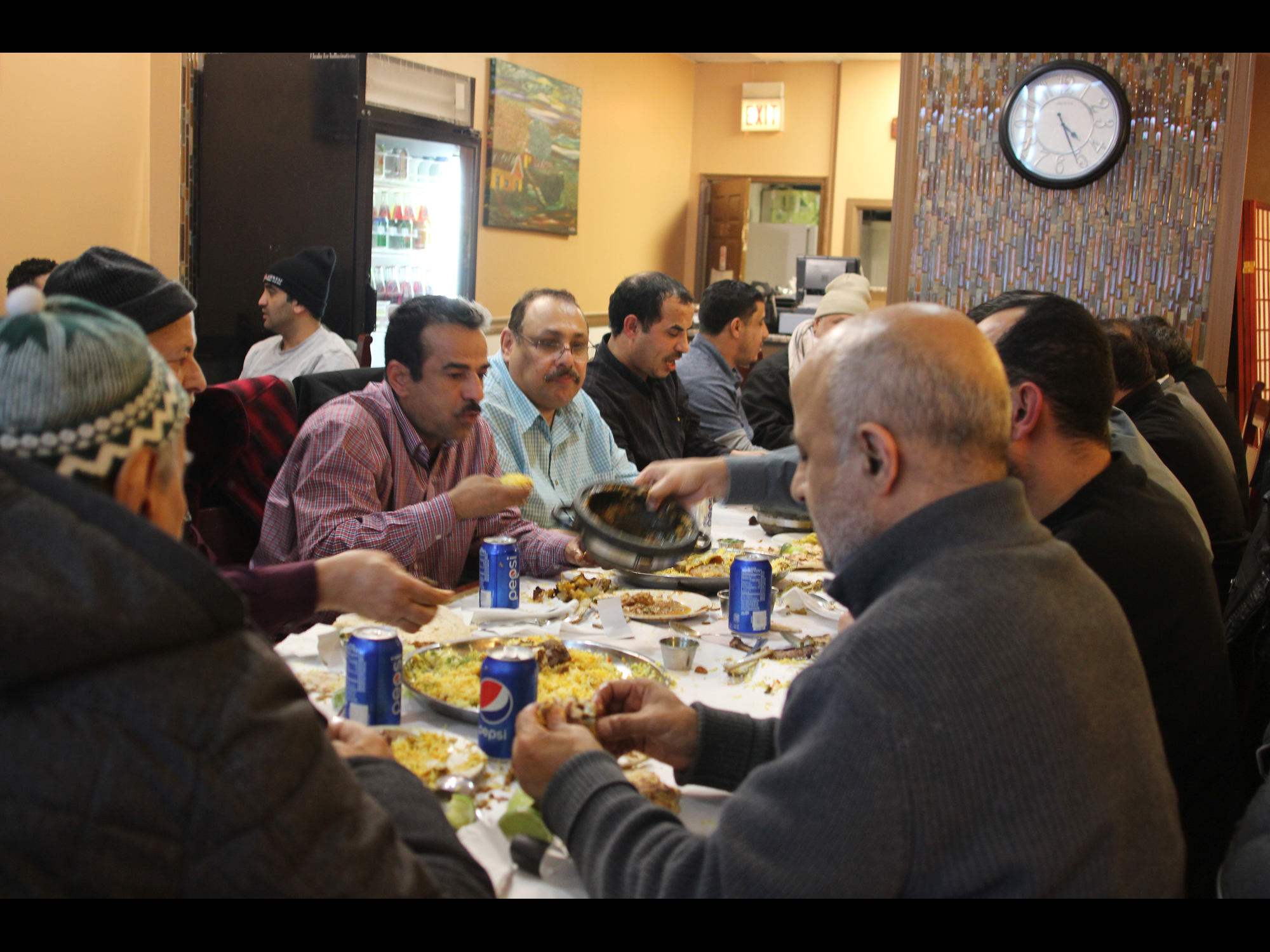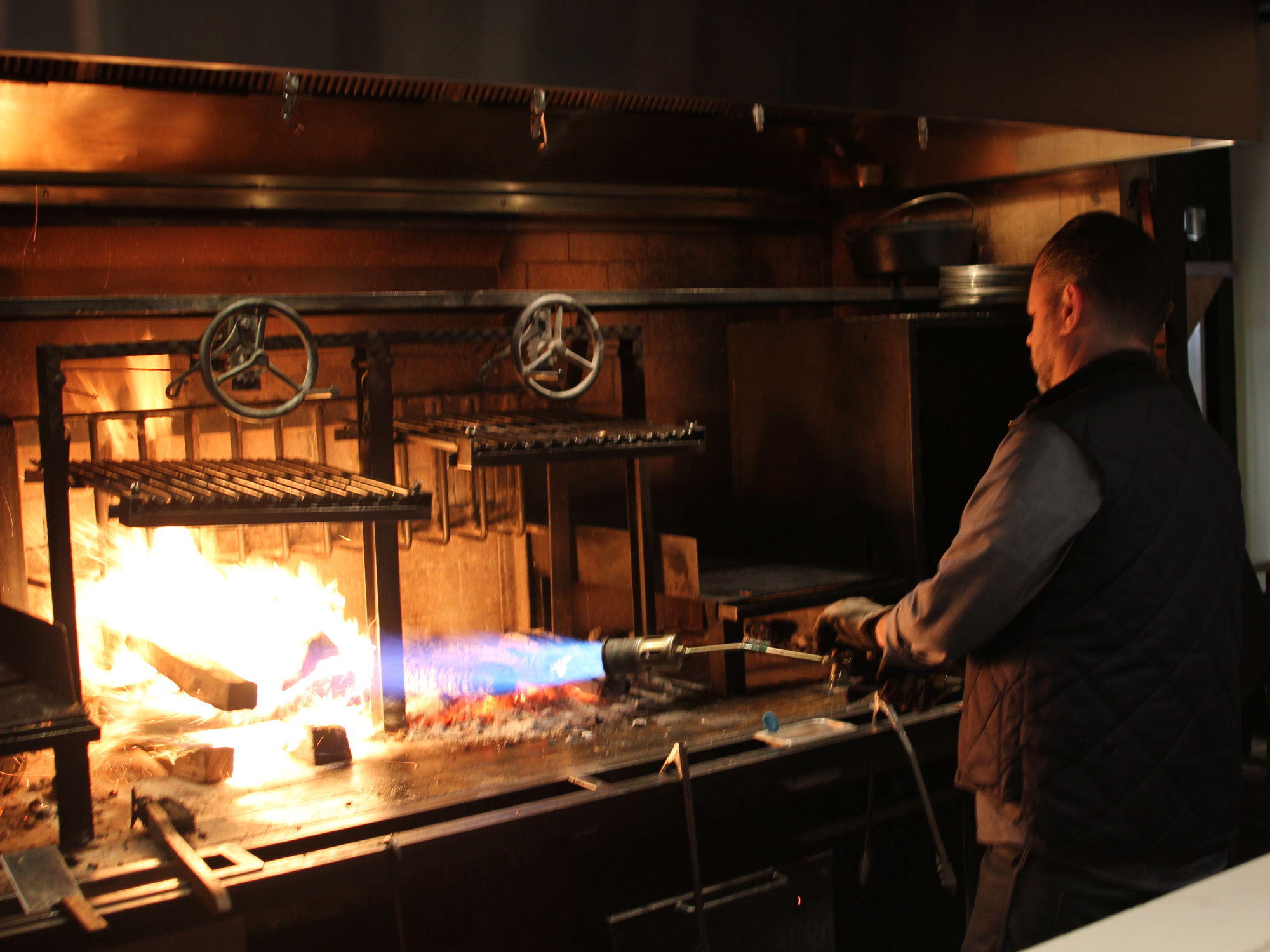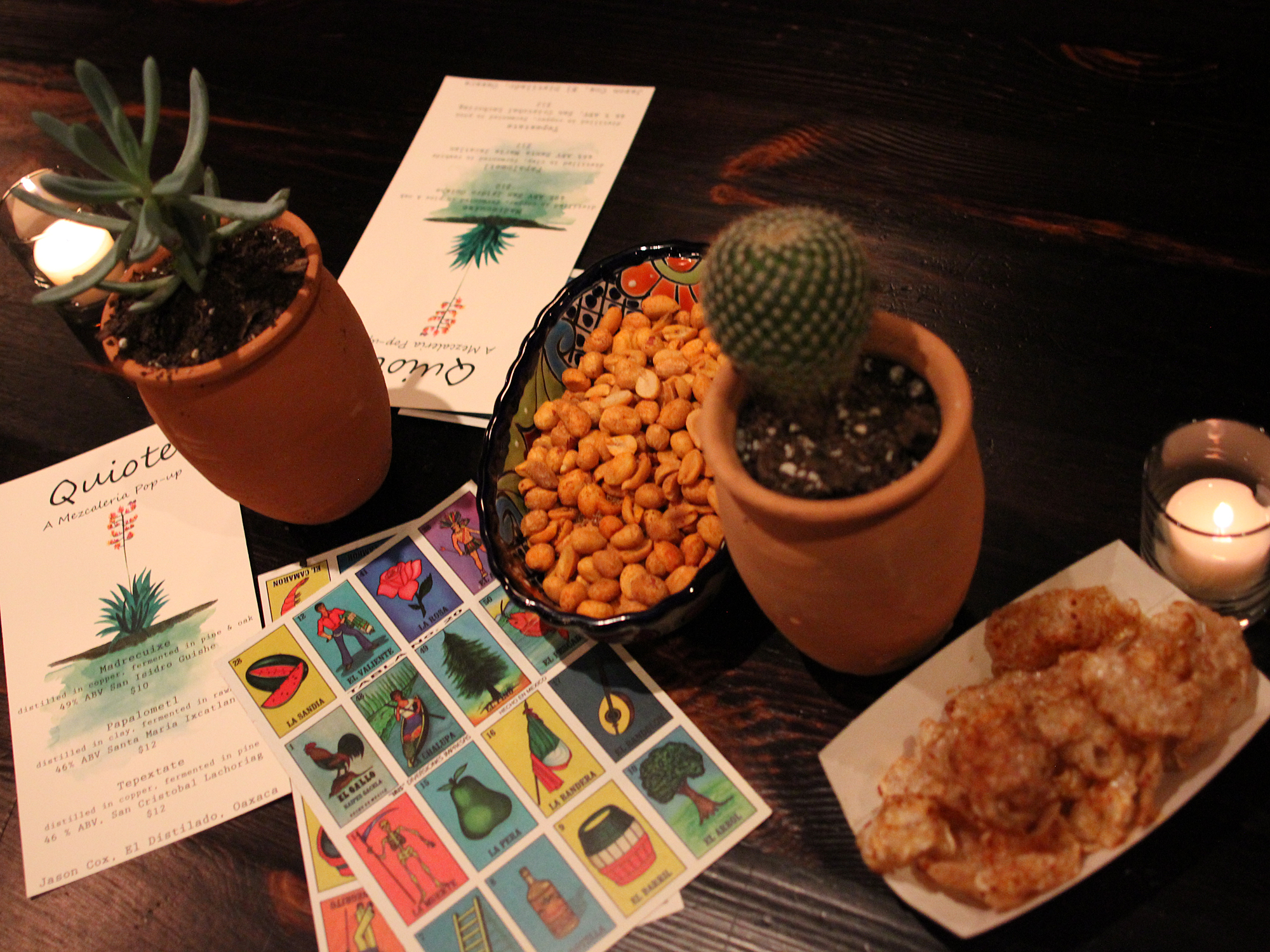THE ASSORTMENT OF MESCALS AT QUIOTE, the new Logan Square Mexican restaurant from Dan Salls of The Salsa Truck, is something special to have on hand, but at least as special to have on hand is the beverage director usually resident in the basement mescal bar, Bobby Baker. Baker trained as a mixologist in San Francisco, but was working at Mescalogia, one of the top mescal bars in Oaxaca, when Salls met him on his research trip in 2016. He lured Baker to Chicago by offering him a job that lets him split his time between Chicago and Oaxaca, keeping his knowledge of this often wild and untamed spirit up. And there’s no mistaking that he is a font, or perhaps destilería is a better term, of knowledge on the subject of mescal.
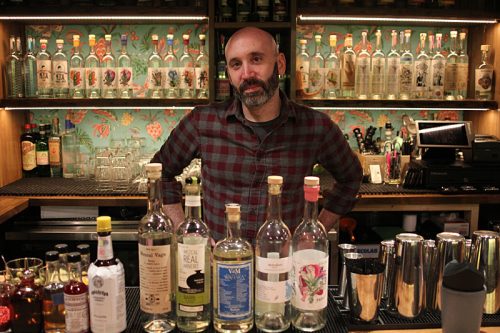
Bobby Baker
For all that tequila is a big business dominated by big tequila makers, tequila’s forefather mescal remains a cottage industry, with literally thousands of producers scattered throughout many regions where different varieties of agave plant grow. And making it in the same way it’s been made for 400 years—as Baker puts it, “Less as a commercial practice and more as a cultural practice.”
“Most of that mescal never leaves the village where it’s made,” Baker says, but the growing demand for artisanal mescal means that there’s a wide variety of labels exporting quality mescal made from different subspecies and by different methods. I asked Baker to pick five bottles (out of the 86 behind the bar) that would demonstrate this diversity in how mescal is produced, and so he started pouring them for me while explaining what makes them special.
Here, in his own words, are his choices of five to get to know from the assortment at Quiote. And when you try them, keep in mind his tips for happy mescal drinking: “If you put too much in your mouth, the vapors of the ethanol overwhelm you, it’s too intense. So take little sips. Don’t even drink it at first—kiss it, let it wet your lips, and start noticing the layers of flavor, let it open up for you. Spend time with it. If you’re not getting your buzz fast enough, have a beer on the side.”
The vegan alternative: Mescal Vago Elote
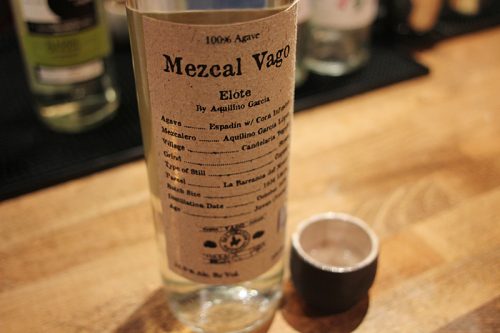
It’s American-owned, two cool dudes. This guy Judah was basically a surf punk living on the beach. He got injured or sick or something, went in the hospital and fell in love with his nurse. And her family is from Candelaria Yegole, a region in Oaxaca that produces mescal, her family is mescaleros. Vago is tremendously transparent about the way they make their mescal, and they print out as much information as they can fit on the label, which is made from spent agave fibers. It’s always a good indicator for a mescal, if you can see who made it, when, what kind of still, how big the batch was, how many distillations—the more information you can get on the label, the more indication it is that you’re drinking the authentic stuff.
This is kind of their flagship product. There’s a style of mescal called pechuga, it’s made for celebrations. It means “breast,” and typically in Oaxaca it would be chicken or turkey, though there’s rabbit pechuga, iguana pechuga. They hang some kind of protein in the still, it’s not submerged in the liquid but it hangs there, and they throw fruit, sometimes nuts or spices in there. Because the steam hits the chicken, you get drippings—it’s not that the mescal tastes like chicken but it gets a certain mouthfeel, a kind of oilier texture that’s interesting. But honestly, in terms of flavor the fruits and the nuts end up putting more of their character into the final product.
We have one chicken, one turkey and two sheep pechugas, but Vago decided to do a version of that using roasted corn—that’s why it’s called Elote. It’s the vegan alternative! The corn flavor, it’s subtle but it’s there and it’s a really lovely mescal. They bottle at the traditional high proof, this stuff is 51% alcohol, they bottle each batch at the proof where it tastes the best, not for consistency of brand.
The frosting on the cake: Mescal Real Minero Barril
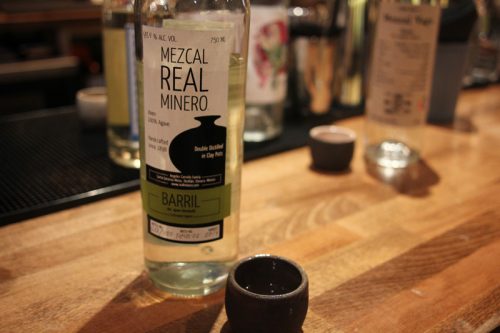
Real Minero is a brand out of Santa Catarina Minas, the term “minero” specifically refers to a mescal that is produced in that region using the traditional methods. So they mash entirely by hand, and they ferment and distill in clay.
Barril is the varietal name, Karwinski is the species. It’s a real cool species—it grows on a trunk. Every other agave, the leaves come right out of the base of the plant. That trunk that raises it up like a tree, it does a couple of things to the final product. Because of the way it’s elevated, it gets the reflected light off the rocks and leaves, so it doesn’t create its own shade like other species and it’s subjected to more intense heat, which produces more intense sugars, more floral flavors, as well as more earthiness. So Karwinskis in their flavor profile tend to start out quite sweet, and then finish dry. They start out floral, and finish earthy. You start out in the flowers, and end up in the flowerbed.
The mescal boom brings a lot of risk that wild agaves are going to be over-harvested, so we like that they’re making sure there will be great mescal in the future.
This particular barril gets a particular minerality from the clay pots that it’s instilled in. It gets a really cool sweet note up front that reminds me of cake frosting. Couldn’t be more different from the elote. Sadly, the master distiller just passed, but his daughter, who’s a mescalero herself, will probably take over and become the master. Which is unusual in these traditional communities, though there are a couple of women in mescal who are really badass, and she’s one of them.
She spends a lot of energy in reforesting and educating other mescal producers on how to make sure they’re farming sustainably. With this mescal boom comes a lot of risk that wild agaves are going to be over-harvested, so we like that they’re making sure not only that we get great mescal now, but that there will be great mescal in the future.
Notes of rattlesnake: VdM Wahaka Sotol

This brand, Wahaka, also is very invested in reforesting, and they have one reforesting project which is being funded by some really special limited-release mescals from all over Mexico. This is one of them, and in fact it’s technically not a mescal, it’s a sotol. Sotol is distilled from a plant whose common name is “the desert spoon.” It’s related to agave, but it’s not an agave. It’s a different plant, but production is very similar, and it’s just as old—it’s not a hip fad.
Sotol is made in the northern parts of Mexico—they make it in Chihuahua, in Durango, and even historically in parts of Texas and New Mexico. They’d never make it there now, because of how labor intensive it is—a bottle of sotol made by Americans being paid an American minimum wage would be way too much. Lower yield on the plants, longer lifecycles, harvested by hand, milled by hand, cooked, fermented, distilled—it’s a tremendous amount of labor for a fairly low yield.
Even espadin, which is the highest-yielding subspecies of all of them, 9 kilos will yield one liter of mescal. So that’s 20 pounds that’s got to be harvested, brought down by donkey from the mountain, put into this pit that you’ve cleaned out, build the fire by hand, put these heavy agaves in there, bury the whole thing, let it sit and smolder underground for five days or so, dig it back out, take the cooked agave out—each one of these agaves can weigh over a hundred pounds.
But, they wouldn’t do it if it didn’t produce amazing stuff….
Anyway, back to this guy, they only made 96 bottles. It actually has rattlesnake venom in it, which has a really cool, numbing quality, kind of like Sichuan peppercorn. And 100% of their proceeds go to the reforestation project.
The rare blend: Mezcalero San Balthazar Guelavila #17
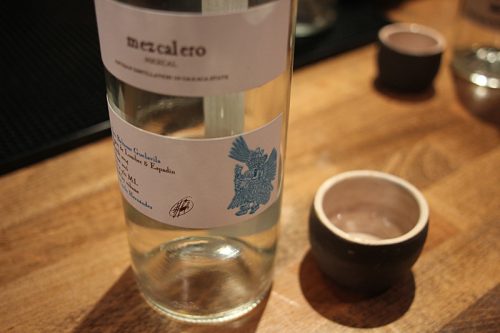
Mezcalero is a project by the same importer who brings in a brand called Alipús. They do these really special releases under the Mezcalero brand, very small production, designated by numbers—he’s up to number 17 at this point. Each one is produced by a different producer from different agaves. It’s an ensemble, a field blend—that means you take what’s ripe at a particular time and you cook it together, you distill it together. It’s not a true blend, where you’d take final products and mix them to hit a certain flavor profile. They all get processed together.
The two agaves here are lumbre and espadin. Lumbre is particularly unusual in that it only grows in San Baltazar Guelavila, a tiny little subregion in Oaxaca. It doesn’t grow anywhere outside of that region, and botanically it’s not even known what species it is. This blend of espadin and lumbre—it’s divine. We love it.
It has a little yeasty quality to it, which is a good time to mention that all of these mescals use natural fermentation—there’s no cultivated yeast strains in use. What’s in the air, what’s in the cracks in the wood, what’s coming off the fruit trees outside the palenque—that’s what makes the mescal.
My brother’s mescal: El Jolgorio Madrecuixe
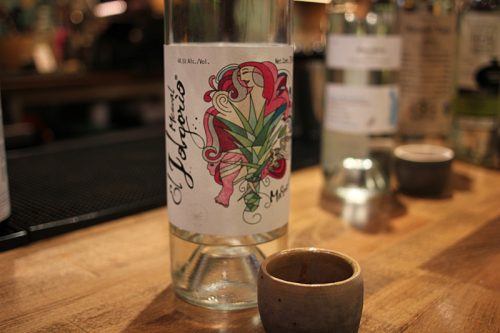
This brand is owned by the Cortez family, who own the bar where I worked in Oaxaca. Asis Cortez, who designed the label, is a 6th generation mescalero. I’ve been friends with him for many years, back when he first launched his brand in San Francisco. Asis and his family basically took me in in Oaxaca, and he feels like my brother. They’re really warm, wonderful people.
This brand, El Jolgorio, is really special stuff. They source from about twelve different palenques, all over different regions of Oaxaca. As you can see on the shelf, each bottling has different images and different-colored wax tops. And they all will refer to a different variety of mescal. So this is a madrecuixe, like the barril we tasted earlier, it’s a common species. They’ve got about 12 or 13 different expressions of different species, all from different palenques and regions. They wait until they have something really special that they feel is worthy of this brand. And by sourcing from more than one palenque, you can extend your brand without making the producers over-harvest.
This was produced in Río Seco, which is a little village in the region of Zoquitlan. Río Seco is a special place, they only have one distillery, that’s shared communally. The whole village shares it. So there are many mescaleros making mescal here, but because they only get so much time with the still, what they make, they keep. Very little mescal from Río Seco ever leaves.
Anyway, this is one of my absolute favorite mescals. Like the barril, it starts kind of sweet and floral—I get cotton candy and rose petal. And then an earthy finish, very dry, I kind of get sunflower seed, or wet potato. To me, this is just a beautiful expression of this species, the Karwinski.
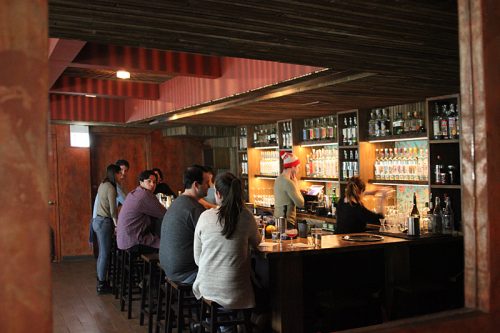
Michael Gebert distills the food scene (with a hint of rattlesnake) as editor of Fooditor.
Latest
Join the Discussion
After you comment, click Post. If you're not already logged in you will be asked to log in or register with Disqus.





